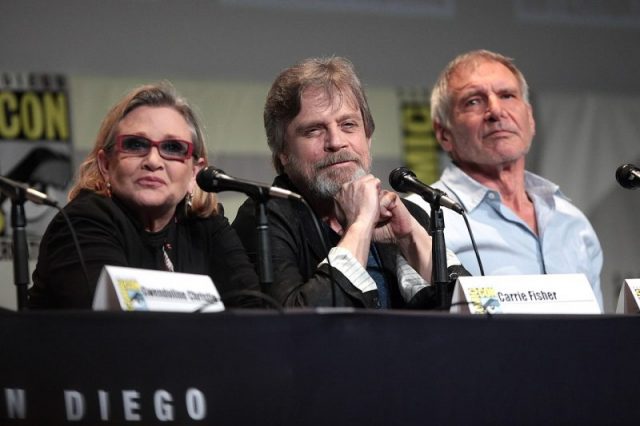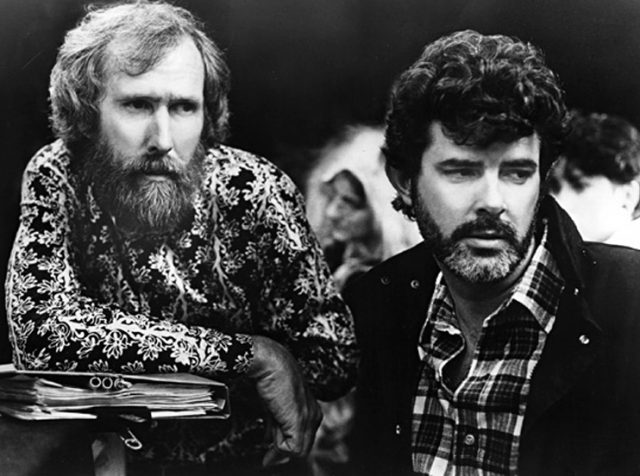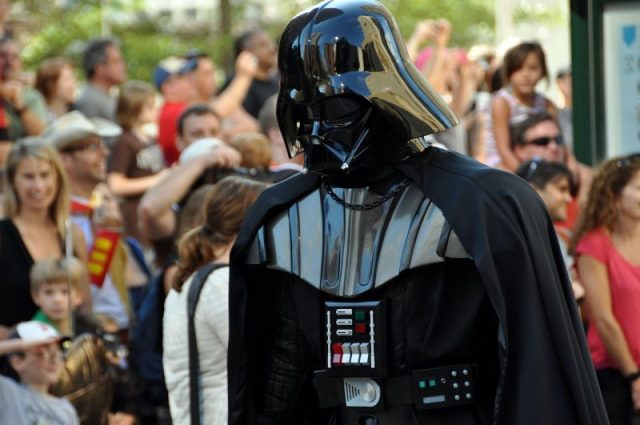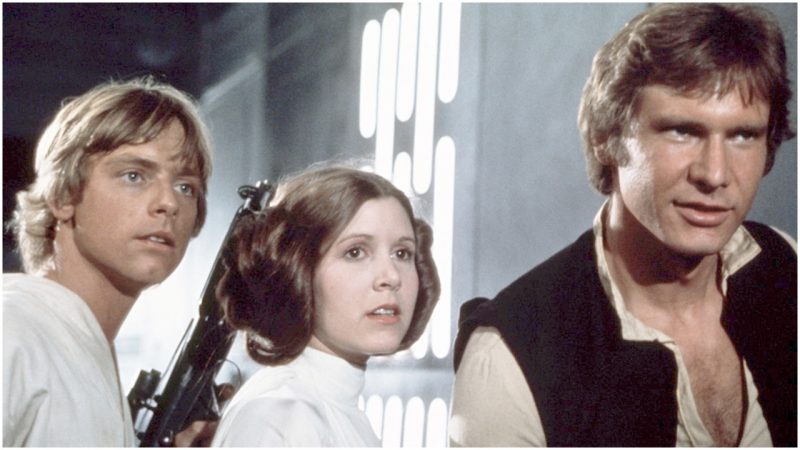Forty years ago, an oddball movie debuted in 40-ish theaters around the country on Memorial Day weekend. A kooky mash-up of Flash Gordon comic series, spaghetti Westerns, and Samurai epics, it was, in the possibly pompous words of its little-known director, George Lucas, a “space opera.” Huh? It featured space battles with lightsabers, revolutionary special effects for the times, a pair of blinking, beeping robots, and a cast of no-name actors—Harrison Who? Lucas had faced endless rejection when he shopped the project around Hollywood. “Nobody wanted to do this movie,” Lucas told the L.A. Times in 1977. Eventually, 20th Century Fox agreed to produce and distribute the movie, but even the studio didn’t expect it to sell many tickets.
Star Wars, of course, went on to become a billion-dollar behemoth, shocking most likely everyone involved. It made household names of Harrison Ford, Mark Hamill, and the late Carrie Fisher. The franchise is such a juggernaut that the success of The Last Jedi is all but guaranteed, even without all the good reviews it’s received.
But back in 1977, box-office prognosticators had their eye on another movie expected to bring in audiences: The Other Side of Midnight, based on a Sidney Sheldon novel. (Don’t remember it? Neither do we.) In those days, film buyers had to bid for movies to place in theaters, usually without seeing them; Fox was pushing Midnight, which most buyers preferred. “A lot of the older guys thought of Star Wars as a kiddie movie,” Erik Lomis, who booked the Lucas film in begrudging Philadelphia theaters, told The Hollywood Reporter in 2015. “The cast meant nothing, and no one knew who George Lucas was.”

Everyone soon knew who George Lucas was. With its wide appeal, Star Wars was an instant hit, an immediate touchstone for obsessive fans. People waited for tickets in lines that wrapped around city blocks. On opening day, one of the movie’s producers was making the usual promotional rounds on the morning TV circuit and afternoon radio call-in shows. One enthusiastic listener called in and was “talking about the movie in really deep detail,” producer Gary Kurtz recalled to the L.A. Times in 2011. “I said, ‘You know a lot abut the film.’ He said, ‘Yeah, yeah, I’ve seen it four times already.’ ”
George Lucas, then 33, was vacationing in Hawaii when Star Wars premiered. He told the L.A. Times on June 5, 1977: “I think this movie will break even.” In fact, box-office records were immediately set in every theater that screened the movie. Star Wars grossed $2.89 million—in its first week alone.
Even the critics loved Star Wars. The New York Times’ Vincent Canby called it “fun and funny” in his 1977 review. (Never a pushover, Canby also wrote, “The story of Star Wars could be written on the head of a pin and still leave room for the Bible.”) Time magazine immediately recognized Star Wars as a national pop-culture lodestar, calling it the best movie of the year for an intended May 29, 1977, cover story, back when a Time magazine cover story had cultural currency and reach. (At the last minute, the ascension of Israeli Prime Minister Menachem Begin kicked George Lucas off the cover.) Time called Star Wars “a remarkable confection: a subliminal history of the movies, wrapped in a riveting tale of suspense and adventure, ornamented with some of the most ingenious special effects ever contrived for film.”

“It’s the flotsam and jetsam from the period when I was twelve years old,” Lucas explained to Time. “All the books and films and comics that I liked when I was a child. The plot is simple —good against evil—and the film is designed to be all the fun things and fantasy things I remember.”
(Time magazine also quaintly referred to the movie’s likable robots as “Artoo Detoo” and “Threepio.”)
Lucas vowed he would not direct another Star Wars film, saying he had made a prototype for other directors to follow. He went on, of course, to direct four more chapters of the epic.

Star Wars was expected to be knocked off screens during the summer of 1977 by more sure-fire hits like A Bridge Too Far, The Deep, and The Exorcist II: The Heretic. Instead, it played in more than 1,000 theaters at its peak that summer. Star Wars was nominated for 11 Academy Awards and won seven, though notably, the Oscars were mostly for technical categories like visual effects, film editing, and production design. (The Academy did allow Lucas a best director nod, but wasn’t prepared to award him the golden prize. That went to Annie Hall director Woody Allen.)
Today Star Wars is the number two all-time box office hit, with $1.5 billion in adjusted-for-inflation dollars (behind Gone With the Wind). Proving the power behind the Force, the most recent entrant to the franchise, last year’s stand-alone Rogue One, took in $1 billion worldwide. If there is one thing certain about The Last Jedi, it will be a box-office megahit, and everyone will know the name of its directors and stars.
